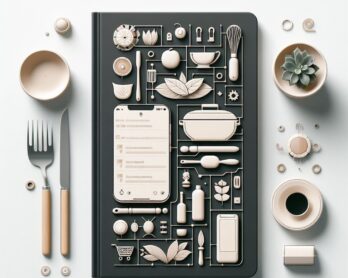Reduce Kitchen Costs with Twelve Frugal Tips
The kitchen is often the center of the household and so it makes sense to look at your expenses in the kitchen when you want to save money.
Much of family life occurs in the kitchen. It is where a lot of living takes place and a lot of eating takes place. Advertisers know that appealing to basic needs such as family and food is a great way to increase sales. As a result, the kitchen is also a great place to cut expenses in your budget. Below are 12 tips for saving money in the kitchen.
- Make as much as possible (and as much as you are comfortable with) from scratch. Not only are raw ingredients cheaper than prepackaged foods, but you can tailor the food to suit your family’s tastes and dietary requirements and you will avoid preservatives. Raw ingredients usually have a minimum of packaging which means they are better for the environment too.
- Don’t boil your noodles to cook them! Use this energy-saving method. Bring the water to a boil, add your noodles, put the lid on the pan, and turn off the burner. Let the noodles sit for at least twice as long as the recommended cooking time (some noodles will need to sit longer and others will need to sit for a shorter amount of time). Stir the noodles periodically to prevent them from sticking together and to monitor when they are finished.
- Save water in the kitchen. When you drain noodles or clean produce, save the water to use for watering plants in the garden.
- Use the pantry method for grocery shopping. Figure out what groceries you use and stock up whenever those items go on sale. Avoid buying your standard grocery items at full price.
- Coupons can be useful when stocking your pantry. Avoid brand loyalty whenever possible. However, if you or another member of the family is dedicated to a brand product, use coupons to defray the costs of that item. Try stocking up whenever the item goes on sale and you have coupons. Get it for as cheap as you can when you stock up.
- Make your own ice. Ice cube trays are a wonderful invention. Many people have icemakers. However, diehard iced beverage drinkers often find that the ice maker doesn’t keep up. Buying ice is an unnecessary expense if one uses ice cube trays. For ice cube trays to be effective, one family member will have to be responsible for making sure the trays are filled and emptied regularly. The best plan is for someone to take responsibility for emptying them at least twice a day and refilling them.
- Always wait until your washer and dishwasher are full before running them.
- Use the air-dry setting to dry the dishes in your dishwasher. If an air-dry setting is unavailable, then turn off the dishwasher when it finishes rinsing (before the dry cycle). If you open the door of your dishwasher after the rinse cycle, the dishes will dry much more quickly. Note: It is important to remember to turn the dishwasher off when you do this. Otherwise, when you shut the door after emptying the dishwasher, it will go a head and dry your empty dishwasher.
- If you drink bottled water for taste or for purity, consider getting an under-the-sink filter installed. The initial cost may set you back a little but it will save you money and hassle for many years to come (in addition to the fact, that it is better for the environment). If an under-the-sink filter seems too expensive or difficult, consider a filter that attaches to your faucet or a filtration pitcher.
- Don’t use paper towels. Use rags instead. Rags are free and re-usable. The best source for rags is your wardrobe. Retire your old flannel shirt and reuse old t-shirts by cutting them up for rags. Use holey socks over the end of a broom handle to reach and sweep up cobwebs. Another excellent source for top-quality rags is the cloth diapers that your child has now outgrown.
- Don’t use paper napkins at the dining room table. Use cloth napkins. Make your own out of fabric that works for your decor. Pick something that is soft and washable. Make your napkins out of a pretty print to hide stains.
- Don’t reheat your food on paper plates. Use your dishes to reheat your food.
Economical Ideas for the Home and Kitchen
| Image sources |
|---|









